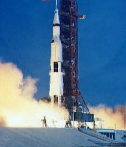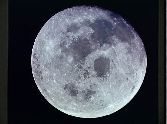

Instructor Willard "Will " Waddell
Sequential Systems
Astronaut Briefing Session
AWARDS AND COMMENDATIONS
Outstanding Performance Award for 500 hours of instruction time presented by H.W. Pinkham, Director of Apollo Site Activation and Logistics, North American Aviation . 1966
Outstanding Performance Award for 1000 hours of instruction time presented by Wally Schirra. 1967
First Snoopy Award, presented by Neil Armstrong. 1968
Letter of appreciation from James Lovell for training
prior to the Apollo 8 mission. 1969 Second Snoopy Award, presented by Walter Cunningham subsequent to the Apollo 8 mission. 1969
Letter of appreciation for his employment at North American Rockwell by J. P. McNamara, Space Division President.
Apollo Achievement Award for Apollo 11 success, signed at Washington, D.C. by Thomas Paine, Administrator, NASA
After serving in the U. S. Army Air Force at the end of World War II, Willard "Will" attended and graduated from the Northrop Institute of Technology, Inglewood, CA. For 11 years before joining North American Aviation, he worked as a mechanic-electrician on Air Force bombers for the Grand Central Aircraft Co., Tucson, AZ.; on F-89 Scorpion Interceptor-Fighter aircraft at Northrop Aircraft, Hawthorne, CA.; and on various aircraft from Cessna’s to airliners to jet executive aircraft for the AiResearch Aviation Service Co. at the Los Angeles International Airport.
He joined North American Aviation’s Autonetics Division, Anaheim, CA. in June 1962 to instruct Air Force civil service technicians on the maintenance of the Minuteman intercontinental ballistic missiles (ICBM) inertial navigation and guidance system components.
In October of 1963 he transferred to North American's Space and Information Systems Division (S&ID) in Downey, CA. He was assigned to prepare and present instruction on the Apollo Sequential Systems.
Sequential Systems comprised circuitry in both the Command and Service Module to automatically sequence events required for the rescue of the crew in the event of an abort. Manual backup switches were also available on the C&D panels along with others to initiate normal mission events. Sequential Systems interfaced with many other Apollo systems.
Will has retired and residing in the southern California area
Biography



